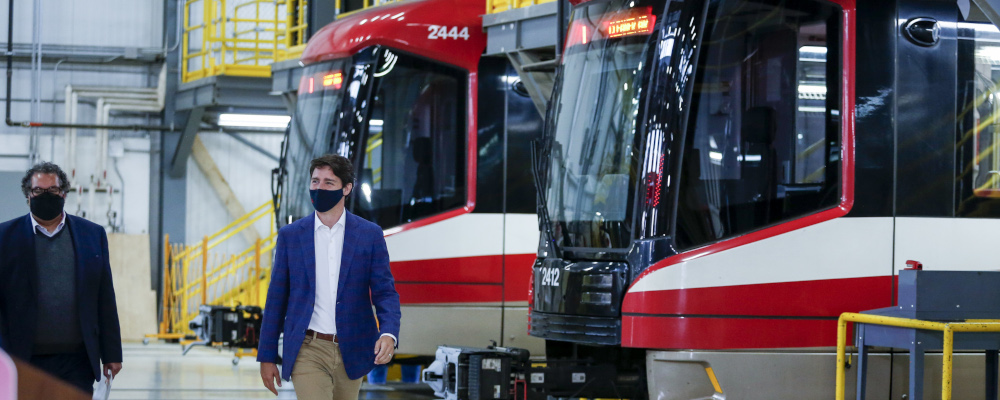Prime Minister Justin Trudeau is making the rounds, pledging money for various public transportation projects across Canada.
This isn’t unusual. Throwing around infrastructure money in the run-up to an election is a time-honoured tradition. A very bad tradition we should stop immediately.
Whether or not one agrees with a specific public transportation project, it’s hard to fathom why the federal government should be involved in local or regional infrastructure. After all, we already have elected municipal and provincial officials to oversee public transportation.
And this is a crucial accountability mechanism — if we don’t like their decisions, we can vote them out. Adding the federal government into the mix blurs that accountability. It’s not clear what insight an MP from New Brunswick has into the transportation needs of Mississaugans, for instance.
But there’s an obvious cynical reason for Ottawa to be involved in public transportation funding—namely, elections.
If there’s one thing politicians love doing, it’s announcing funding for infrastructure projects. A federal politician rides into town, essentially greenlights the project, then leaves the project with provincial or local officials. The only thing they really add to the project is cash. But it’s very good retail politics.
Most people are too busy to evaluate the level of program spending at a departmental level, but they do remember when the prime minister announces a large symbolic project. So politicians get credit for cutting the cheque but aren’t accountable for the future success of the project.
Why wouldn’t federal politicians do this?
Lest one think this is a tactic discovered by Prime Minister Trudeau, recall that Prime Minister Stephen Harper did the same thing.
When late-Toronto mayor Rob Ford cancelled the Scarborough light rail line and promised to replace it with a subway, he needed funding to make this promise a reality. The project was widely considered impractical. But wouldn’t you know it? The Harper government rode into town to help fund the project.
When a project faces delays or cost overruns, the lack of accountability becomes more than an abstract concern.
Would this project have gone ahead if financed purely by the provincial and municipal governments? Perhaps. But there’s no principled reason why local voters can’t decide.
There is one potential justification for federal infrastructure funding: Ottawa collects more revenue than other levels of government. Some of that revenue is redistributed back to provinces through transfers (e.g. equalization), which in theory ensure that all provinces, even the least wealthy, can fund similar social programs such as health care.
But it’s not at all clear how this rationale would apply to public transportation. After all, the most expensive projects are in the wealthiest parts of the country. Toronto doesn’t need people from Moose Jaw to chip in for a subway.
Finally, when a project faces delays or cost overruns, the lack of accountability becomes more than an abstract concern. Suppose the Green Line in Calgary goes wildly over budget and the scope of the project is reduced. Who can voters blame?
Do they blame the municipal government for poor administration? Or the federal or provincial governments for not sending enough money? Having three levels of government at the table means having two other convenient targets for politicians to push the blame towards.
If the federal government wants to fund local infrastructure, that funding should be limited to block grants (such as the Gas Tax Fund). Canadians should discourage any perceived or actual direct involvement in local decision-making by Ottawa.
It may be a tradition in Canadian politics, but it’s a tradition we should break. We don’t need three levels of government at the table arguing over the bill.
Recommended for You

Trevor Tombe: How is Carney going to pay for his commitments? There are some tough choices ahead

Chris Spoke and Peter Copeland: Ontario is missing millions of homes. Here’s where the government is failling—and how it can actually make a meaningful difference

‘The cost of permitting has ballooned’: Sharon Singh on Canada’s broken regulatory system

Sean Speer: Pierre Poilievre is right to favour pro-worker policies over increasing immigration



